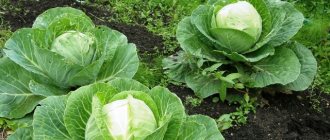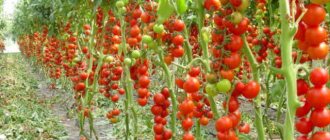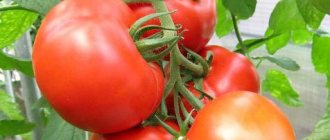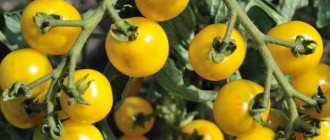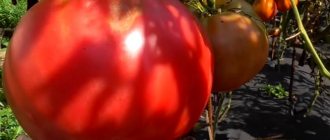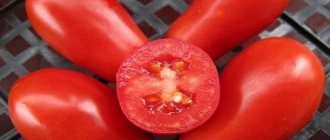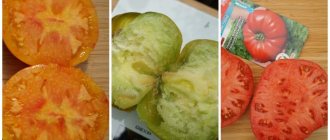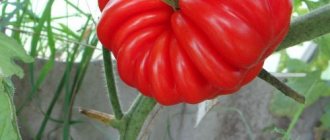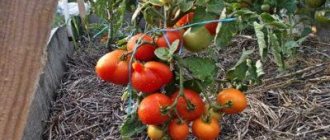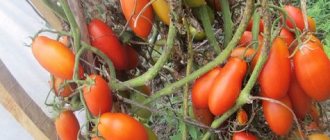Rosselkhoznadzor has published a list of the main diseases of tomatoes and methods of treating them. Sick tomatoes are a sign of insufficiently good agricultural technology: summer residents grow a small set of crops and very often neglect crop rotation. In addition, not everyone knows about modern methods of treating tomato diseases. We have collected this information into six cards in which we will tell you:
- How to treat blackleg
- How to treat brown spot
- How to treat late blight
- How to treat blossom end rot
- How to treat stolobur
Bacterial diseases
Bacterial diseases are almost untreatable. If such a disease attacks the seedlings, then the diseased bushes are removed from the greenhouse. They treat only the initial stage of the lesion or engage in the prevention of young plantings.
Bacteriosis
Having opened the greenhouse in the morning, the gardener is surprised to find a wilted tomato bush. The disease affects plants literally overnight. A void or liquid will form inside the cut stem and the inside will turn brown.
An advanced disease cannot be treated. Affected plants are removed from the greenhouse and destroyed by burning outside the garden. Ash and the plants themselves cannot be used as fertilizer or in a compost pit.
The main way to combat bacteriosis is to prevent healthy plants.
Traditional methods
For bacteriosis:
- Spray the plants and water the soil around them with a solution: 10 g of potassium permanganate per 10 liters of water.
- Tomatoes are treated with another solution: two bottles of Streptomycin are diluted in 10 liters of water, 15 g of quicklime bluestone is added. Repeat after three days.
Chemical methods
Use store-bought products:
- 20 ml “Fitolavina” per 10 liters of water. The plants are sprayed and the soil around is watered.
- 125 ml “Baikal-EM” per 10 liters of water. Disinfect the soil in the greenhouse, spending per 1 sq. m 2.5 liters of prepared solution.
Stem necrosis
Occurs during the fruiting period. Depressed emerald-colored spots appear on the stem, similar to cankers. After a couple of days they begin to darken and crack. This is the work of bacteria. If you press on this place, white mucus will begin to flow out of the wound.
Milky aerial roots appear on the lower part of the bush, which turn brown over time. The leaves lose their elasticity and green color and begin to dry out. Brown stripes appear on the outside of the stem. This is how necrosis of the stem occurs.
The duration of the disease is 2-3 weeks. Then the plant in most cases dies.
It is impossible to save a tomato. It is removed from the garden bed and burned outside the area, disinfecting healthy bushes and soil.
Traditional methods
Pharmacies are in a hurry to help. The soil is impregnated to a depth of 15 cm with a solution of potassium permanganate: 10 g of potassium permanganate per 10 liters of water.
Chemical methods
Spray the areas where diseased tomatoes grew with a solution: 20 ml of “Fitolavina-300” per 10 liters of water.
What causes seedlings? Tomato stem necrosis. Website "Garden World"
Fungal diseases
Fungal microorganisms have increased vitality. They can withstand heat and cold very well. They are successfully preserved in the soil during severe frosts, and in the spring they attack the crop with renewed vigor. When fighting it, special attention is paid to soil disinfection.
Late blight
Late blight is a common disease of garden crops, especially dangerous for tomatoes. The word “late blight” itself means “destroying a plant.” There are 50 types of pathogens of this disease. Dealing with them is difficult, but possible.
The first rule is to carefully monitor the condition of the plants, starting in mid-summer. Late blight is manifested by blackening of the leaves, then the fruits. The inflorescences turn yellow and fall off, preventing fruit from setting. Within a couple of days, all plants in the greenhouse are affected. Therefore, it is important to notice the disease in time and begin to treat it. Pay attention to the photo.
Traditional methods
Fight with home remedies:
- Spray with whey diluted with water 1:1, sometimes replaced with kefir. Then the solution is prepared from the ratio: 1 liter of kefir per 10 liters of water. Used every day for both prevention and treatment purposes.
- Another handy remedy is baking soda. 2 tbsp. l. dilute soda in 10 liters of water and add a little liquid soap so that the solution sticks to the leaves. For a visible effect, treat plants every week.
- Salt is used for prevention: 250 g are diluted in 10 liters of water. After drying, the salt forms a small film on the surface of the leaves and stem, thanks to which late blight does not penetrate deep into the plant.
Chemical methods
If folk remedies no longer help, use chemistry:
- Spray with fungicide “HOM”: dilute 40 g per 10 liters of water. True, the drug is aimed more at prevention than treatment. But there is a significant advantage: the substance does not accumulate in the soil and plants, which means it is not addictive. It is used up to five times per summer. Maintains defense for up to two weeks, but is washed off by rain.
- Treat with antibacterial “Furacilin”: 10 tablets are crushed and diluted in 10 liters of water. Prepare immediately for the entire summer season. Apply three times during the summer.
- Treat with biological pesticide “Fitosporin”: 2 tsp. for 10 liters of water. The drug is safe for humans, penetrates plant tissue and kills pathogenic bacteria. After use, the fruits can be eaten immediately. Plants are treated every 10 days.
Attention! If tomatoes and potatoes are planted next to each other, process them together. Often late blight immediately affects potatoes, tomatoes, eggplants and cucumbers in one area.
PHYTOPHORA ON TOMATOES - ENEMY No. 1. [An effective way to fight.]
Cladosporiosis
Cladosporiosis is a fungal disease characterized by brown spots on seedlings. It is practically untreatable, since the fungus that causes the disease can survive under unfavorable conditions (even in winter) for up to 10 months.
When a gray coating and brown spots form on the leaves, it’s time to sound the alarm. Even one infected tomato bush can cause the death of the entire seedling. The disease does not affect the stems and fruits, but completely deprives the plant of its greenery. What affects the fruits: they do not ripen, shrink and begin to rot.
Completely affected bushes are removed from the greenhouse or greenhouse. If signs of damage are just beginning to appear on the plants, then there is a chance to compete for the harvest.
Traditional methods
Such methods will not help with the progressive stage of the disease, when the plant already has brown spots.
- Whey comes to the rescue: 1 liter per 10 liters of water. The solution is suitable for spraying.
- To disinfect the soil, potassium chloride is used: dissolve 30 g per 10 liters of water and 40 drops of iodine. The soil is soaked to a depth of at least 10 cm.
- If the soil is acidic, then a decoction of wood ash will help: boil 300 g of ash in 10 liters of water for 25 minutes, then leave for two days.
Chemicals
In the later stages of the disease and severe damage to the bush, chemicals are used. For treatment, broad-spectrum fungicides are used: “HOM”, “Poliram”, “Abiga-Pik”, “Bravo”, “Ditan NeoTek 75”. They are processed late in the evening, when there is no hot sun, wind or rain, a month before harvest. Repeat every two weeks. The products are diluted according to the instructions for use, observing the specified precautions.
Anthracnose
Another of the most common fungal diseases of tomatoes is anthracnose. Affects all areas of the bush . On leaves and stems it appears as reddish-brown spots with a yellow border along the edge. Then they turn purple, darkening and rotting.
Round, “pressed-in” spots appear on the fruits, which also grow over time and begin to darken, acquiring a black color. As a result of damage to the root system, the bushes themselves do not grow intensively, they curl, the leaves turn yellow and fall off, the ovaries do not form or crumble.
Mature tomatoes are more often affected. Moreover, the disease mainly affects fruits that touch the ground. At the top of the bush, the fruits remain uninfected.
Tomatoes affected by anthracnose cannot be saved. Affected bushes are dug up and burned. Treatment is carried out at the first symptoms of the disease and treated for prevention.
Traditional methods
When a disease is detected, pharmaceuticals are first used:
- They save the crop with the help of copper oxychloride: 40 g of the product are dissolved in 10 liters of water.
- Spray the bushes with 1% Bordeaux mixture or colloidal sulfur.
Chemicals
Special substances for combating fungus are the most effective, but harmful to humans and animals:
- Product "Polyrama". It is processed at a consumption of 2.53 kg per hectare. 2-3 procedures are carried out with an interval of 10 days.
- The fungus adapts to medications, so the drugs are changed from time to time. Cumulus DF does a good job. It is suitable for treating tomatoes. Use according to instructions.
- More gentle means help to slow down the spread of anthracnose: “Gamair” and “Fitosporin-M”. The method of use is described in the instructions.
SUPER MIXTURE No. 1-c for TOMATOES and CUCUMBERS from PHYTOPHORA, ANTHracnose, PERONOSPORASIS + FEEDING
Pests of open ground
Springtails or springtails
Small, dark or light insects. They feed on tomatoes grown from seed in the early stages of development. Cotyledons are completely destroyed.
Colorado beetle
A very dangerous pest that threatens tomatoes and other plants of the nightshade family. Insects (yellow-black striped beetles and red grubs with black spots) feed on the leaves by eating them. Colorado beetles attack plants in May, immediately after planting seedlings.
Aphid
Small, colorful insects that live in colonies cause major losses in tomato crops. Aphids feed on leaves, flower buds, fruits and shoots, and suck juices. Affected leaves curl, become deformed, turn yellow and die. Aphids produce dew that covers many plant organs, and stick fungi grow on it. These non-parasitic fungi block the access of light and air to the leaves and contribute to the death of plants. Aphids are often carriers of viral diseases.
scoop
Quarantine pest. This nocturnal butterfly feeds on plants only in the form of caterpillars. Adults do not pose a direct threat. The caterpillars are omnivorous, feeding on the above-ground parts of the tomato, gnawing holes. Plants become bare and die
Nematodes are root pests
Very serious pests when growing tomatoes. These are mainly root-knot nematodes (Meloidogyne). Most tomato varieties are immune to 3 types of root-knot nematodes. Nematodes attack the roots, causing hardening. Infected plants are weakened in growth and produce lower yields. Removing nematodes is difficult. Recommended:
- grow resistant varieties;
- do not plant tomatoes in the same place for at least 3 years;
- in the case of cultivation in greenhouses, thoroughly disinfect the soil.
In organic farming, it is worth planting marigold, which contains toxic compounds for nematodes.
Preventive measures will help protect tender shoots and ensure good yields: steaming the soil, frequent ventilation, spraying, and proper irrigation. If parasites appear, it is important to destroy them as soon as possible before the flowering phase begins.
Tomato pests and diseases lead to plant death and large crop losses. That is why it is very important to fight them, systematically control the cultivation of plants and quickly respond to the first alarming symptoms of diseases.
Viral diseases
Viral diseases are no less dangerous for plants and are also almost impossible to cure.
Mosaic
If the leaves of tomatoes acquire a mosaic (variegated) color, alternating dark green and light green areas, then the garden has been visited by an unpleasant disease called “mosaic.”
As the disease develops, other symptoms arise: the leaves become deformed and wrinkled, sometimes acquire a thread-like or fern-like (rare) shape, the fruits become smaller and ripen unevenly, yellow spots may appear on the fruits and leaves.
Enation forms on the underside of deformed leaves with thread-like outlines. These are cup-shaped outgrowths with an average size of 1 cm. The appearance of outgrowths is a specific sign of TMV (tobacco mosaic virus), which indicates the development of the most harmful form of mosaic - enation.
Traditional methods
Some foods from the refrigerator can save our harvest. True, it all depends on the stage of development of the disease.
- A solution of whey in a ratio of 1:10 with water is an effective way to combat the disease at the initial stage. Spray the bushes once every 7-10 days until a healthy color appears on the leaves.
- Whey is replaced with skim milk in the same proportion. Seedlings are treated once every 7 days. For effectiveness, add 1 tbsp. l. urea.
Chemicals
At the dacha, they have their own first aid kit, which contains various means and solutions for providing garden first aid. The drug “Farmayod-3” copes well with the disease. The bushes are sprayed with a 0.05% solution.
Tobacco mosaic virus on tomatoes
Chlorotic leaf curl
A light green tomato bush with a curly top is the most characteristic sign of the disease. The growth of seedlings slows down greatly, the shoots become bare, the ovaries become hard and small as the disease develops, and new ones are not formed.
Traditional methods
Curliness responds well to treatment with folk remedies:
- Onion peel solution helps a lot. The peels of 3-4 onions are steamed in 3 liters of water. When the mixture has cooled, add 5 drops of iodine. Spray the seedlings to prevent the virus from spreading to healthy shoots.
- 10 g of potassium permanganate is dissolved in 10 liters of water. Spill the soil where the infected plants grew.
Chemicals
If you don’t have time to treat curliness for a long time, then chemistry will do it quickly and easily:
- Spray the tomatoes with a 1% solution of Bordeaux mixture or copper sulfate. Treatment is carried out once a week.
- Spill the soil in the greenhouse with a solution of the Baikal-EM preparation: 0.5 cups per 10 liters of water. Consumption per 1 sq. m of soil is 2.5 liters.
Mosaic
The disease is caused by the tomato or tobacco mosaic virus. When grown together with cucumbers, tomatoes are affected by the cucumber mosaic virus. If potatoes grow nearby, the mosaic can be caused by the potato X virus. These viruses generally infect most nightshade crops, as well as many plants grown together with tomatoes.
Viruses are transmitted from one plant to another by wind, airborne droplets, contact, and seeds. Viral diseases are very harmful. Yield loss reaches 50-70%. More often appears in the second half of summer. Viruses are very resistant to environmental factors. Can be stored in seeds and on plant debris for 22 months.
Description of the disease
The disease on tomatoes can appear in two forms.
- Enation defeat. Yellow spots of a vague shape appear on the leaves, the leaf becomes speckled. The leaves themselves become lighter, stop growing, and take on a thread-like shape. Sometimes the edges of the leaves acquire a serrated shape, becoming similar to a fern leaf. The leaves gradually curl and dry out. A distinctive feature of this type of mosaic is the growth of special outgrowths on the underside of the leaves, similar to either a new petiole or a new young leaf. The length of the neoplasms is no more than 1 cm. This type of mosaic is very harmful.
- Mixed infection, when plants are affected by several types of viruses at once. Streaks appear on the stems, petioles and fruits. They can be wide and narrow, long and short. Such a lesion is called streaking or striation . The streaks are lighter than the surrounding tissue and represent dead areas of the skin. When dead areas appear on the fruit, their skin bursts and the internal contents turn out.
How to treat the disease
- If the enotic form appears, diseased plants are immediately removed. The rest are sprayed with Farmayod.
- Maintaining temperature conditions, especially in greenhouses. The disease begins to manifest itself at temperatures above 28°C for more than 5-7 days. Therefore, a draft must be created in greenhouses. Correct temperature conditions prevent viruses from developing.
- Treatment of tomatoes with Farmayod. After treatment, no concentrate should form in the greenhouse, and in open ground it is advisable that there is no rain for 3-4 days, since the preparation is very easily washed off.
If, despite all the measures taken, the disease progresses, the affected plants and their parts are removed, and the rest are treated.
Non-communicable diseases
Such diseases occur due to improper care of seedlings and the greenhouse as a whole.
Apical rot
This disease is not always easy to detect. It often attacks tomatoes from the inside. They find out that the bush is sick only by cutting the fruit. Black rot is found in the middle of the vegetable, and it becomes tasteless and watery.
Brown spots sometimes appear on the stem near the peduncle. As the spots develop, they darken, become black, dry and slightly depressed. Over time, the skin on the fruits dries out and they acquire a dark brown color, and tissue necrosis worsens. Occurs due to improper care and bad weather conditions.
Traditional methods
When treating with methods popular among the people, they always use what is at hand. Good wood ash obtained from burning wood (not grass) is sifted. Take two glasses of powder, pour 1 liter of boiling water, leave for about 30 minutes until the mixture cools down.
The resulting infusion is mixed with 10 liters of ordinary water. Pour 1 liter of product under the root of each tomato. Foliar feeding is carried out with this infusion, after adding 50-60 g of grated laundry soap per 10 liters of ash solution.
Chemicals
Professional products work faster and more efficiently:
- Powder "Calcifol 25". Prepare a solution: 2-5 g of the drug per 1 liter of water. Spray the leaves 3-5 times from the moment the ovaries appear with an interval of 7-10 days.
- Brexil Sa product. Treatments are carried out with a 0.2% solution every 10-15 days after abundant watering.
- Calcium nitrate (calcium nitrate). To obtain the working fluid, take 20 g of calcium nitrate and 10 g of boric acid per 10 liters of water. Treatment of leaves is done once every two weeks.
TOMATO DISEASES / blossom end rot / NEW SIMPLE REMEDY / DISEASES OF TOMATOES
Leaf swelling
A clear sign of the disease is growths in the form of warts on the upper and lower sides of the leaf. These pimples are even noticed on the stems of tomatoes. These are the new growing roots dying off. This is how oedema or swelling of the leaves manifests itself. These are not bacteria or fungi. This is the so-called “dropsy”, which occurs due to improper, strong intra-root pressure resulting from frequent and abundant watering.
To get rid of swelling, the following procedures are performed:
- Thin out the seedlings to allow air to circulate better.
- The greenhouse is ventilated more often, and the greenhouse is opened for drying.
- Reduce the number of irrigations and water consumption.
Other problems specific to tomatoes
Sometimes negative changes in the appearance of tomatoes are not associated with any disease or insect attack. This is a specific reaction to flaws in agricultural technology or growing conditions.
Table: reasons for changes in the appearance of tomatoes:
| What tomatoes look like | Possible reasons |
| Deformed fruits | Sudden changes in temperature or cold weather at the time of flowering - incomplete pollination has occurred |
| Cracking | Rare but very abundant watering with long periods of “dryness” between them. Another option is overripe the fruit |
| Absence of ovaries with abundant flowering | Most often - a sudden change in weather conditions during flowering (sharp cooling or warming). Also - lack of moisture in the soil |
| Slow development of ovaries | Prolonged cold snap and/or cloudy weather, meaning a lack of light. Another reason is sharp changes between day and night temperatures |
| Uneven ripening of the fruit (a yellow-green spot remains at the stalk) | Either it’s just a varietal peculiarity or a nutritional deficiency. |
| Thick fruit skin | This is typical for many modern hybrids grown on an industrial scale - thus improving their shelf life and transportability. The problem may also be caused by prolonged heat and drought. |
| Tomatoes turn black and rot | The main reason for the development of rot is excess moisture combined with low temperature. |
Measures to prevent diseases
An experienced summer resident knows that it is better to prevent any disease than to treat it.
- If the farming and cultivation area is susceptible to any infection or, due to climatic conditions, tomatoes are prone to spoilage and rotting, attention should be paid to prevention even at the stage of planting seeds. Disinfection of selected seeds before planting is carried out with a 1% solution of potassium permanganate or copper sulfate and a solution of “Fitolavin”. Dilute 2 ml of the drug in 100 ml and soak the seeds for 1 hour.
- Pay attention to the choice of seeds with resistance to fungi, viruses and bacteria.
- The proximity in the garden beds is of great importance. Potatoes are more susceptible to various diseases, and they themselves are often a source of infection for other crops. Tomatoes are not planted near peppers and eggplants due to the similarity of diseases.
- Regularity and proper care of tomatoes is paramount:
- daily ventilation of greenhouses;
- moderate moisture, without waterlogging;
- correct stepsoning;
- infrequent planting of tomatoes;
- timely weeding;
- destruction of last year's surface humus;
- soil disinfection in autumn and spring before planting: 1% potassium permanganate or a solution based on “Baikal-EM”.
- Garden tools are periodically disinfected, for example, with Ecocid-S. Dilute 50 g of the product in 5 liters of warm water and spray all garden tools completely.
- Do not forget about fertilizing with potassium and phosphorus, spraying with immunomodulators. This increases the immunity of the bushes.
Disease Prevention
It has long been known that prevention in any matter is the solution to 80-90% of problems that could appear in the future. Tomatoes are no exception and there are some recommendations for growing them:
- Maintaining a balance of nutrients in the soil will prevent up to 50% of all diseases.
- When interacting with plants, you need to do everything as carefully as possible to prevent damage.
- Humidity levels can be maintained with mulch.
- It is important to correctly determine the time of planting tomatoes to prevent their hypothermia.
- You should not plant only one variety, it is better to use several. This will help you determine which one is more suitable for you in the future.
- Before sowing, seeds must be disinfected and treated with various solutions to protect against various diseases and increase yield.
- We must not forget about proper landing. The distance between bushes should be at least 50 cm.
